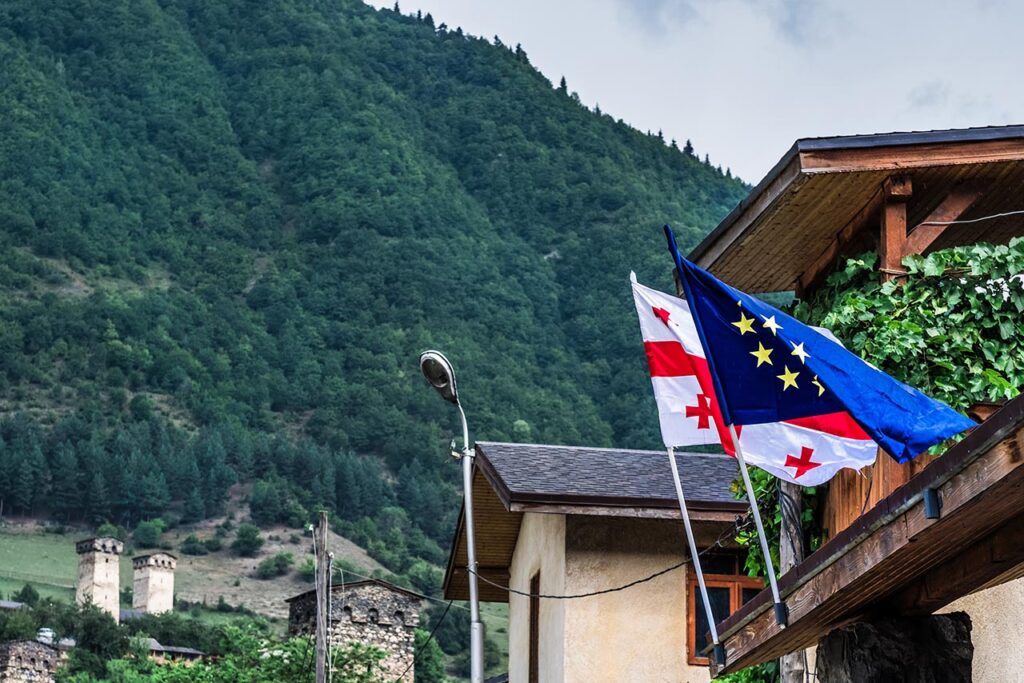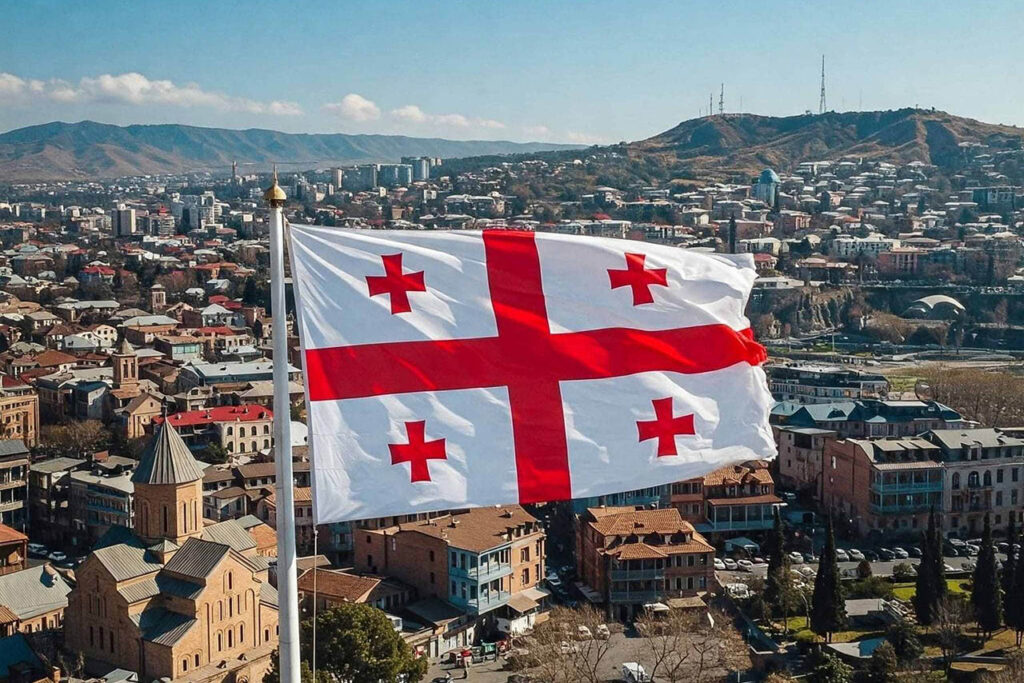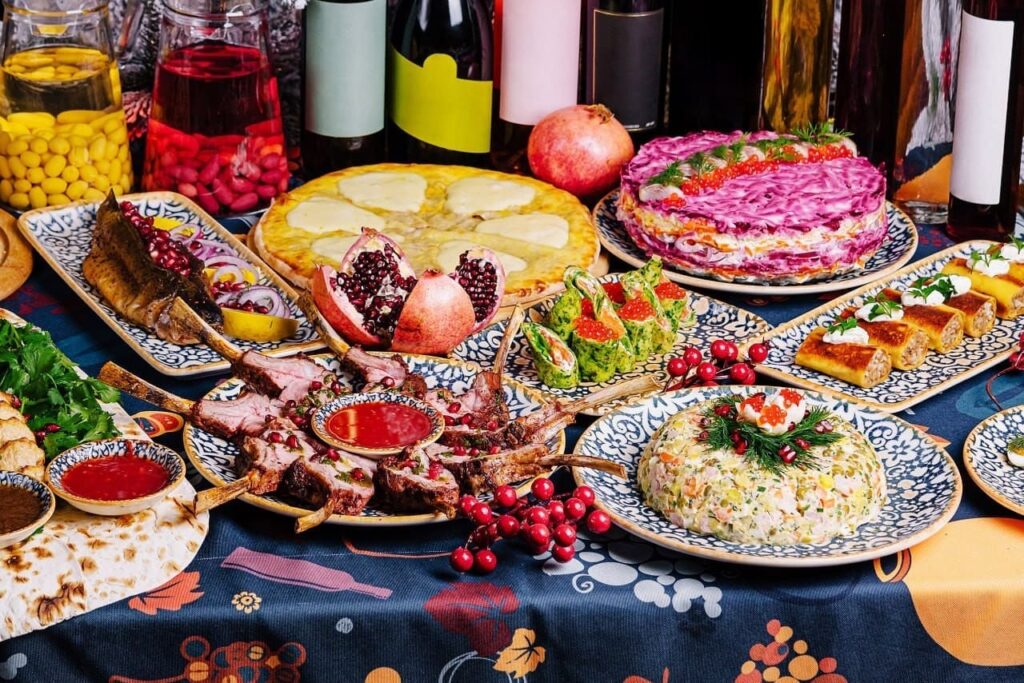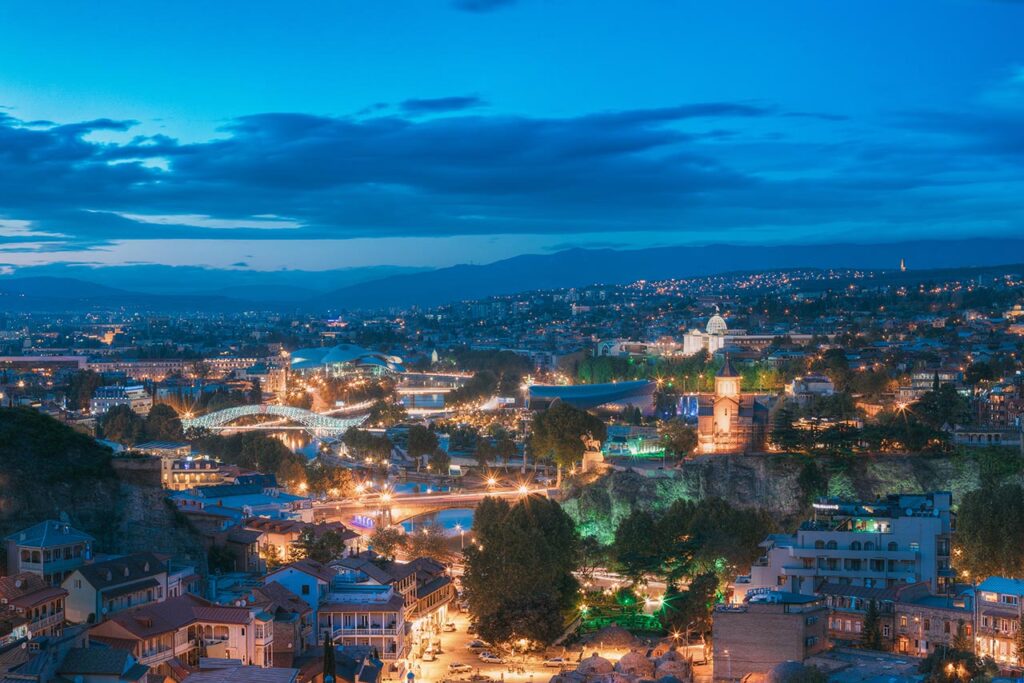Georgia has fought for millennia for independence, statehood, and territory.
This is why the joyous and solemn celebration of long-awaited freedom is so important to the local people.
On May 26, Georgia celebrates Independence Day. Cities and villages are filled with festive hustle and bustle: music plays, ceremonial parades take place, and the air is filled with the faint aroma of shashlik. Nature seems to join in the general merriment, blooming with vibrant colors.
In this article I will tell the story of the restoration of Georgia’s state independence and the main events of this fateful process. And also about how citizens celebrate the national holiday of freedom.
History of Georgian Independence Day
One of the earliest known dates for the emergence of states in the territory of Georgia goes back to the 9th century BC with the founding of Colchis. This state existed for a thousand years and reached a high level of technological development. Its inhabitants produced linen and wooden products, smelted metals, and crafted jewelry of remarkable complexity. Colchis is also renowned as the legendary destination of the Argonauts in their quest for the Golden Fleece. It’s worth noting that while much of the world was inhabited by less developed tribes, a sophisticated winemaking culture thrived here.
In the eastern part of Georgia, around 300 BC, the state of Caucasian Iberia was established. Its capital was located in Mtskheta, and it was ruled by King Pharnavaz I.
In Iberia, the primary language was Aramaic, while in Colchis, it was Greek.
Incidentally, due to the ancient history and ethnic composition of the country, the Georgian language is quite complex and unique compared to other languages. Everyone who tries to learn it faces challenges, especially with pronunciation (for example, the letter “k”).
For millennia, the lands of Georgia have been the site of bloody wars. Due to its favorable geographic location, many empires sought to conquer it, and some succeeded. The legendary ruler David Agmashenebeli, the “builder of Georgia,” managed to reunite the lost territories. Through his efforts, the country regained its lands and restored its political and military significance.
He was succeeded by Queen Tamar, ushering in the “golden age of Georgian history.” Under her reign, a powerful army was formed, the spread of Christianity intensified, churches were built, and the state reached its peak of political influence.
However, such fertile, rich, and strategically advantageous lands continued to attract neighboring powers. The territory faced invasions by Mongols, Persians, and later Turks. This was followed by a period of occupation by the Russian Empire.
In the late 18th century, Omar Khan attacked and brutally devastated Georgian lands. Taking advantage of the defeat and internal conflicts, Russia almost bloodlessly seized the country. An agreement was signed with Georgian King George XII to join the empire in exchange for a protectorate and armed assistance.
George died without having time to appoint an heir (due to having been in a quarrel with his son David the day before). And while the king was still alive, Russia ordered that no new ruler be appointed unless he left a will. Thus, due to Russian manipulations and a fateful coincidence, Georgia lost its chance for autonomy.
Then the matter of the country’s subjecthood was transferred to Tsar Alexander I. He did not know what to do with these territories and was generally inclined to grant Georgia autonomy (fearing uprisings). However, the State Council persuaded him to strip the country of all freedoms and rights to independence, arguing that this would protect the empire from the threat of rebellion. With the decision to remove autonomy, Georgia, as part of the Russian Empire, lost its national identity.
GDR and Georgia as part of the USSR
After a hundred years had passed, the Georgian people grew increasingly hostile toward such a “merger.” Discontent mounted, and thousands of people gathered for rallies. Meanwhile, in Petrograd (St. Petersburg), the Bolshevik revolution began, and the Tsar lost power.
At the same time, in the regions of Georgia, Azerbaijan, and Armenia, the ZDFR (Transcaucasian Democratic Federative Republic) was formed. The Transcaucasian Sejm officially proclaimed the formation of the state on April 22, 1918. The government of the federative republic was headed by A. I. Chchenkeli.
However, the state did not last long: just a month later, Turkey expressed its displeasure with these geopolitical changes and marched troops to the republic’s borders. As a result, the sejm was dissolved, and the ZDFR broke up into three states.
On May 26, 1918, a new country appeared on the world map – the Georgian Democratic Republic (GDR). A referendum was held, and the political leadership was headed by Noe Jordania. It is this date specifically—not the consequences of the collapse of the USSR—that marks the beginning of the country’s independence.
The flag of the first Georgian Democratic Republic became the “Kizil flag” (a red banner with black and white stripes). Incidentally, this state symbol was also confirmed after the restoration of Georgia’s independence in 1991.
Unfortunately, the republic’s independence was short-lived, lasting only two and a half years. The Russian Empire collapsed, but the state that emerged in its place was unwilling to lose territory. In 1921, the territories of Georgia were conquered once again. From that moment until 1991, the country was under Soviet occupation, yet it never ceased fighting for its autonomy.
One example is the events of 1978, when the people of Tbilisi took part in a huge rally against the decree that designated the Russian language as the sole state language (Georgian was to be removed). Thanks to the efforts of hundreds of locals, the bill was not passed. Later, in honor of these events, a monument was erected in the city park “Deda Ena” (“Native Language”).
Long-awaited independence
On April 9, 1991, a new chapter began in Georgia’s history. Following the results of a referendum, it separated from the Soviet Union and became an independent republic. Having restored the 1921 Constitution and the 1918 Act of Independence, the country officially declared its sovereignty. Power passed to a democratically elected government headed by a president.
Georgia became the first country to secede from the USSR, setting the tone for other states.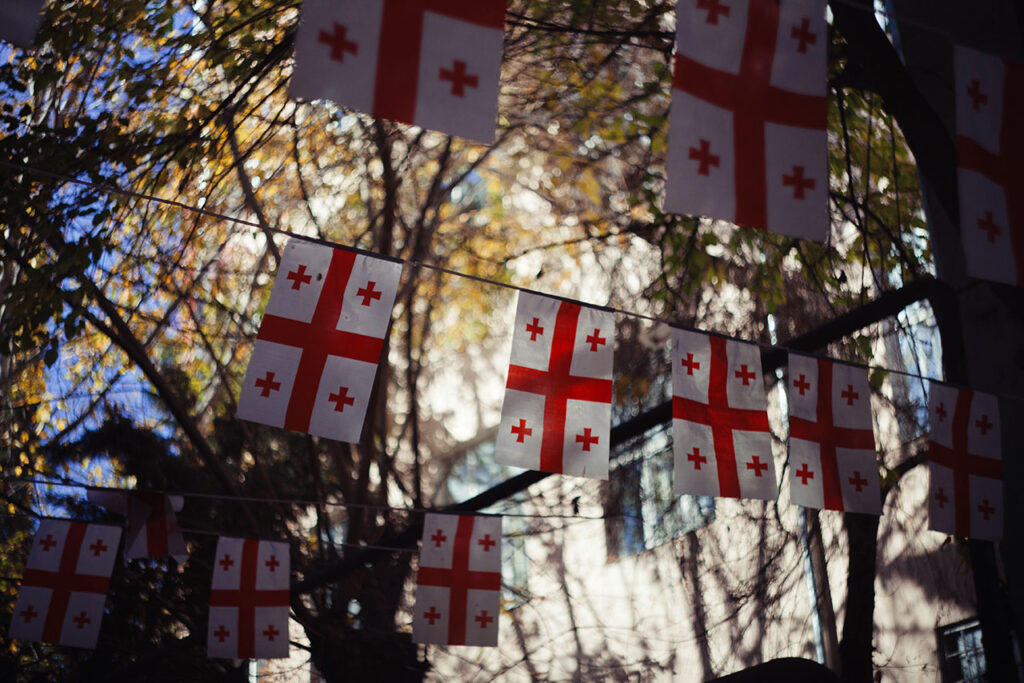
The first president, as determined by a secret ballot on May 26, 1991, was Zviad Gamsakhurdia.
However, later in 1991, a civil war broke out between the government and the opposition, resulting in the removal of the country’s leader from office.
The second president was Eduard Shevardnadze, who served from 1995 to 2003.
He was succeeded by Mikheil Saakashvili, formerly the leader of the “National Movement” bloc. The politician also led the “Rose Revolution” (motivated by the falsification of votes in the elections, which enabled Shevardnadze to secure a second term). In 2007, amid protests, Saakashvili resigned and announced new elections. However, based on the vote, the people chose him again.
Next, the position was held by Giorgi Margvelashvili, and in 2018, Salome Zurabishvili came to power as the first female president of independent Georgia (aside from the interim period served by Nino Burdzhanadze).
Currently, the position of the 6th president is held by Mikhail Kavelashvili, who was elected as a result of the vote on December 14, 2024.
Flag of Georgia
The red and white flag of Georgia in its modern form appeared only in 2004, approved by Mikheil Saakashvili. The design was copied from the banner of the “National Movement”, the president who came to power, and the party itself, in turn, took it from medieval sources. The “cross” flag first appears on Italian maps in 1339. Below I will describe one version of its interpretation.
The flag depicts 5 crosses: the main St. George’s cross and 4 Bolnisi crosses. Their red color means courage, bravery and hot blood of the Georgian nation. The flag also has a religious meaning, symbolizing Jesus Christ and the four evangelists. This design perfectly represents Georgia, where faith and spirituality are highly respected.
Until 2004, the country had many flags: the Union flag, the GDR flag, military flags, as well as individual flags of the kingdoms that were previously on its territory.
How Independence Day is Celebrated in Georgia
Independence Day is a truly important holiday for every Georgian, filled with joy and pride for their homeland. And since May 26 is also an official holiday, the scale of the feast only increases.
Mass celebrations begin in all the cities of Georgia from the very morning – the holiday acquires such significance also due to the boundless love of Georgians for their country.
May 26 is celebrated especially lavishly in Tbilisi, on this day the capital simply sparkles with a multitude of flags, congratulatory posters and people in national costumes, thus paying tribute to the culture. Among the Georgian flags on the streets of the city, you can increasingly see EU flags (the country is striving to join the organization and thus shows unity with the European Union). The Georgian government spends millions of dollars annually on decorations and organizing the celebration.
What events are held in Tbilisi, Batumi, Kutaisi
The ceremonial parade dedicated to Independence Day takes place on the central Rustaveli Avenue, gathering thousands of spectators. Most often, the column consists of military equipment, naval and ground forces. Even rows of soldiers in festive suits “from the needle” march harmoniously along the street – a perfectionist’s paradise) An orchestra plays, thousands of residents joyfully sing national songs, and sparks of festive fireworks fly in the sky. This is a beautiful, bright and noteworthy event, if you are in Tbilisi on May 26 – be sure to see it, even if you are not close to Georgian culture and history.
The celebration captivates from the first seconds of being in the crowd – and now you are already part of a large friendly family that together rejoices in freedom, laughs and smiles at each other.
In addition to political speeches and parades, of course, entertainment events also take place. A stage is set up, concerts are organized, and singers and celebrities perform; contests and flash mobs for kids are held. Come with your whole family – there will be plenty to do!
In addition to Tbilisi, events also take place in Batumi and Kutaisi, although not on the same scale. For example, free entry is offered to the Batumi Botanical Garden. At just the right time, thousands of types of roses bloom there – in a word, the beauty is indescribable.
If you are interested in gardening or simply love the beauty of nature, I recommend visiting the exhibition of rare varieties of flowers and plants in Tbilisi. It takes place on May 26 in the square near the Sion Cathedral and on Shardeny Street; at the festival, you can see everything from roses to cacti.
And, of course, what celebration is complete without delicious food, especially in Georgia. Overnight, tents selling hot dogs, fragrant kebabs that perfume the entire city, wine, beer, ice cream, and other street foods spring up along the avenues and streets.
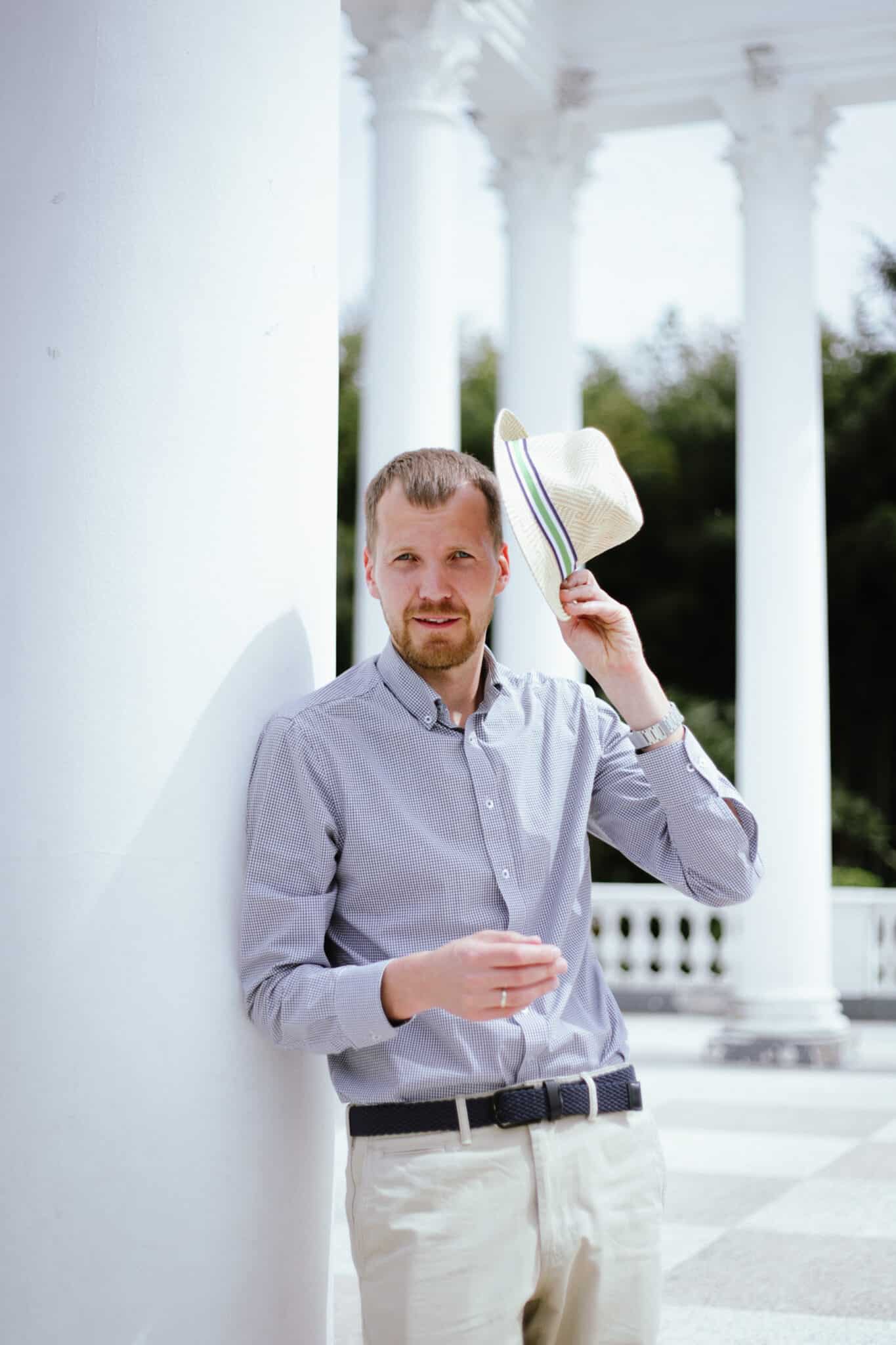
My name is Vitaly Kibitlevsky, I am a tour guide and creator of unique quests in Batumi. If you want to walk around the city with a fascinating storyteller or plunge into an exciting adventure, write to the mail: vitkibit@gmail.com
Find out more about me and my projects here


